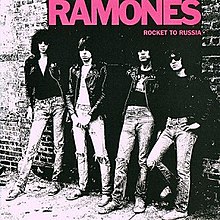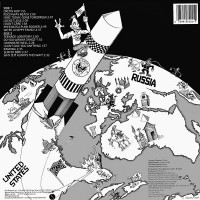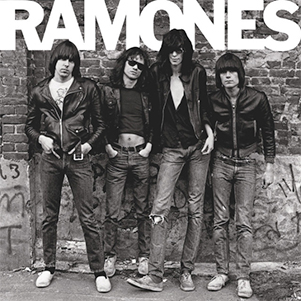
Ramones is the debut studio album by the American punk rock band Ramones, released on April 23, 1976, by Sire Records. After Hit Parader editor Lisa Robinson saw the band at a gig in New York City, she wrote several articles about the group and asked Danny Fields to be their manager. Fields agreed and convinced Craig Leon to produce Ramones, and the band recorded a demo for prospective record labels. Leon persuaded Sire president Seymour Stein to listen to the band perform, and he later offered the band a recording contract. The Ramones began recording in January 1976, needing only seven days and $6,400 to record the album.

End of the Century is the fifth studio album by the American punk rock band Ramones, released on February 4, 1980, through Sire Records. The album was the band's first to be produced by Phil Spector, though he had offered the band his assistance earlier in their career. With Spector fully producing the album, it was the first release that excluded original member Tommy Ramone, who had left the band in 1978 but had produced their previous album Road to Ruin. Spector used more advanced standards of engineering, such as high-quality overdubbing and echo chambers. These painstaking methods caused conflict between the band and Spector since the Ramones were accustomed to a quicker recording process. Spector emphasized the production value as well, working with a budget of around $200,000, far exceeding their earlier album sessions.
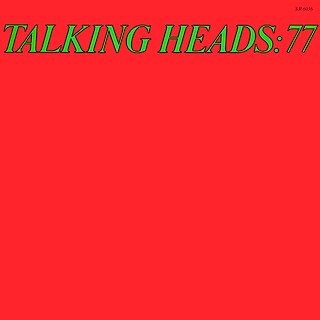
Not to be confused with Talking Heads '77
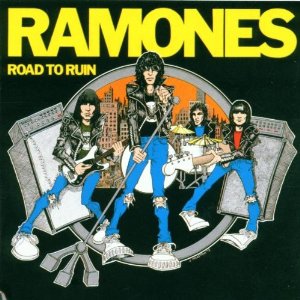
Road to Ruin is the fourth studio album by the American punk rock band Ramones, released on September 22, 1978, through Sire Records as LP record, 8 track cartridge & audio cassette. It was the first Ramones album to feature new drummer Marky Ramone, who replaced Tommy Ramone. Tommy left the band due to low sales of previous albums as well as stress he experienced while touring; however, he stayed with the band to produce the album with Ed Stasium. The artwork's concept was designed by Ramones fan Gus MacDonald and later modified by John Holmstrom to include Marky instead of Tommy.

Pleasant Dreams is the sixth studio album by the American punk rock band Ramones, released on July 20, 1981, through Sire Records. While the band members wanted Steve Lillywhite to produce, Sire chose Graham Gouldman in an attempt to gain popularity through a well-known producer. The recording process brought about many conflicts between band members, most notably the strife between Joey Ramone and Johnny Ramone, due to Johnny starting a relationship with Joey's girlfriend. There were also disputes about the overall direction of the album, with Johnny leaning towards hard rock and Joey towards pop punk. Ultimately, the album incorporated high production values and varying musical styles, straying from traditional punk rock on songs such as "We Want the Airwaves", "She's a Sensation" and "Come On Now". It is the first Ramones album not to feature any cover songs.

Leave Home is the second studio album by the American punk rock band Ramones. It was released on January 10, 1977, through Sire Records, with the expanded CD being released through Rhino Entertainment on June 19, 2001. Songs on the album were written immediately after the band's first album's writing process, which demonstrated the band's progression. The album had a higher production value than their debut Ramones and featured faster tempos. The front photo was taken by Moshe Brakha and the back cover, which would become the band's logo, was designed by Arturo Vega. The album spawned three singles, but only one succeeded in charting. It was also promoted with several tour dates in the United States and Europe.

Subterranean Jungle is the seventh studio album by the American punk rock band Ramones, released by Sire Records on February 23, 1983. Overall, the album featured a return to a somewhat more hard punk rock style compared to the band's previous two albums End of the Century in 1980, and Pleasant Dreams in 1981, which were the most pop-focused of the band's career. This direction was encouraged by guitarist Johnny Ramone. The recording sessions saw disputes between band members, mainly due to struggles with alcohol addiction by Joey Ramone and Marky Ramone, and the drug addiction of Dee Dee Ramone.

Too Tough to Die is the eighth studio album by the American punk rock band Ramones. It was released on October 1, 1984, and is the first Ramones record to feature Richie Ramone on drums. With ex-member Tommy Ramone producing, the recording process was similar to that of the band's 1976 self-titled debut album. Likewise, the record's style—both lyrically and compositionally—saw the band returning to their roots. The photograph on the album cover, which features silhouettes of the band members, resulted from a "lucky accident" after photographer George DuBose's camera malfunctioned.

It's Alive is the first live album by the American punk rock band the Ramones, titled after the 1974 horror film of the same name. It was recorded at the Rainbow Theatre in London on December 31, 1977, and released in April 1979 as a 2-LP set. The album draws from the band's first three studio albums: Ramones (1976), Leave Home (1977), and Rocket to Russia (1977). Four concerts during the UK tour were recorded, but the New Year's Eve one was chosen because ten rows of seats were thrown at the stage after the concert and it was considered the best of the performances at the venue.

Mondo Bizarro is the twelfth studio album by American punk rock band Ramones, released on September 1, 1992, by Radioactive Records. It is the first studio album to feature their new bassist, C.J. Ramone, who replaced original member Dee Dee Ramone. The album was re-released in the UK by the Captain Oi! record label on August 10, 2004, with the band's cover of the Spider-Man theme song included as a bonus track.

Animal Boy is the ninth studio album by the American punk rock band Ramones, released through Sire Records on May 19, 1986. Due to conflicts within the group, the album features less of lead singer Joey Ramone, both in performing and writing, and less performing from guitarist Johnny Ramone. Bassist Dee Dee Ramone wrote and sang more on this album than on previous albums, and Richie Ramone became the first drummer to write songs for the band since Tommy Ramone, the band's original drummer. Richie also wrote for Too Tough To Die (1984). The album spawned four singles, all of which charted on the UK Singles Chart, as well as other charts. In addition to singles, the band promoted their album using a music video for "Something to Believe In", which parodied the contemporary benefit concerts Live Aid and Hands Across America.
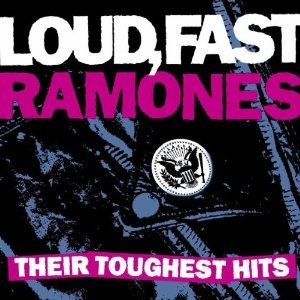
Loud, Fast Ramones: Their Toughest Hits is a compilation of Ramones songs. Curated by Johnny Ramone, the initial 50,000 copies of the album include the 8-song bonus disc Ramones Smash You: Live ’85. The bonus disc features previously unreleased live recordings made on February 25, 1985 at the Lyceum Theatre in London. It is notable for being the only officially released live recording on CD to feature Richie Ramone on drums.

Ramones Mania is the first greatest hits album by the American punk rock band the Ramones. It was released on May 31, 1988 through Sire Records and consists of 30 Ramones songs, including some single versions, a single B-side and one previously unreleased take.

"Sheena Is a Punk Rocker" is a song by American punk rock band Ramones, released in 1977 through Sire Records. Written by front man and lead vocalist Joey Ramone it appears on the band's third studio album Rocket to Russia (1977). The song is well known for its early 1960s influence of surf rock and bubblegum pop that influenced Joey; it has since remained one of the band's most popular songs.
"Danny Says" is a ballad written by Joey Ramone. The song was originally released as the third track on the Ramones' 1980 album, End of the Century. The 2002 Expanded Edition CD of the album includes a demo version of "Danny Says" among the bonus tracks. The song has since been covered and released by the Foo Fighters and Tom Waits.

The Ramones were an American punk rock band from New York City. Their discography consists of fourteen studio albums, ten live albums, sixteen compilation albums, seventy-one singles, thirty-two music videos and ten films. The band formed in early 1974, and upon signing with Seymour Stein of Sire Records, the Ramones released their self-titled debut album on April 23, 1976. Despite the recording process only taking a week and being on a budget of $6,400, the album has since become their most accoladed and iconic release. 1977's Leave Home was the band's follow up album, released less than a year later, also through Sire. While it was the first album to chart in the United Kingdom, it did not chart as well in the United States as Ramones, nor their third record, Rocket to Russia, which was released in late 1977. Road to Ruin was the band's fourth studio album and their first to feature a change in the band member line-up, with drummer Marky Ramone replacing Tommy Ramone.
"Teenage Lobotomy" is a song by the American punk rock band Ramones. It was released on their 1977 album Rocket to Russia, and became one of their most popular songs.

"Rock 'n' Roll High School" is a song by American punk rock band Ramones, from the soundtrack album Rock 'n' Roll High School. The single did not chart in the U.S. but peaked at number 67 on the UK Singles Chart.

The Ramones were an American punk rock band formed in the New York City neighborhood Forest Hills, Queens in 1974. Known for helping establish the punk movement in the United States and elsewhere, the Ramones are often cited as the first true punk band. Though initially achieving little commercial success, the band is seen today as highly influential in punk culture.
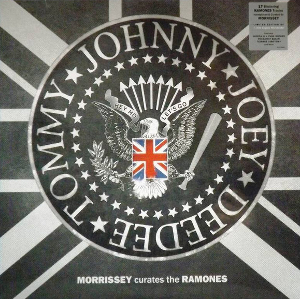
Morrissey Curates The Ramones is a compilation album by the American punk rock band the Ramones, compiled by British musician Morrissey. It consists primarily of songs from their first four albums, Ramones, Leave Home, Rocket to Russia, and Road to Ruin. While Morrissey initially wrote a negative review of the Ramones 1976 debut album in Melody Maker, he was invited by the band's management to pick the tracks for the compilation. The album was released on vinyl on November 28, 2014, and limited to 9,000 copies.
